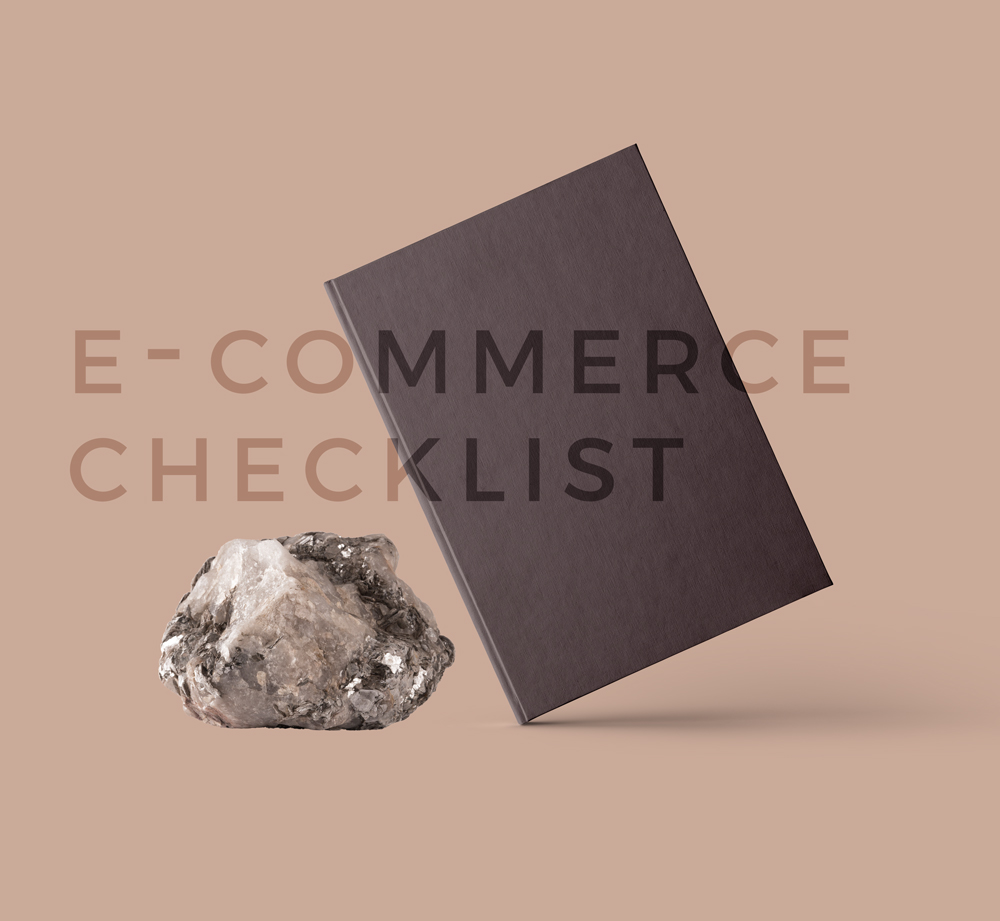You’re ready! You have developed an amazing product and now it’s time to showcase it to the world.

Online and on your website is where users will find you and browse an array of products you offer in your store. With the creation of an e-commerce website, you can easily streamline the selling of your products, online promotions, and notifications once an order is placed. To help you get started, I have created a checklist of information needed to design your site.
1. Home Page Introduction
This is your time to shine. Your home page introduction is the “How can I help you?” of online. In this statement, you should show the visitors what they are looking for, show them where to start and list the standout features of your product. At a minimum, this information should be concise and convincing to keep the viewer’s attention.
2. Call-out phrases. Taglines. Blurbs.
Taglines are super condensed one-liners that describe your brand or product. Taglines can be combined with your logo or used on its own as a header, call-out or blurbs on your website. Ideally, these phrases explain your product or service in 30-60 characters. Take some time to create 3-4 variations of these phrases for your website. Designate one for your tagline and the others as call out phrases or blurbs. Here are a few examples of taglines to get you started.
We guarantee plant growth in 30 days.
Henri Creative, Where brands take form
We offer protection for natural hair.
3. Product Images
Images on your website should do one thing, showcase your product in a stylized manner. Before photographing your product, create an inspiration board on Pinterest.com to explain your vision with your photographer. For images on your product page, a solid background is suggested. However, for your page headers and homepage images, I encourage you to be more creative with the photography. Consider picturing all of the products together or on a model with a continuous theme throughout the images.

Things to remember when selecting images:
- Less is more, keep your focus on the product
- Square and horizontal/landscape images are more attractive for web
- And be sure to have at least three images of the product to list on the product page.
- As always, hire a professional to do your images, or better yet, #HireHenri to execute your product photography.
4. Products and Variations
How many products will you have on your website? Will each individual product have variations? A variation can be categorized as color, size, length and/or quantity. Each of your products may have one or several variations. For example, if you sell a t-shirt online, your variation may be size and color. Before starting your website, know the price point of each product, and if there is an additional fee for variations (color, size, length, etc.). To make it even easier, download a visual example to help you get started.
5. Contact Page
Every website, yes every website should include a contact page. At a minimum, you should list, your email, phone number, and address for shipping. Depending on your product, you may find that storefronts and other specialty stores may want to purchase your product wholesale. So give them the resources to do so. For a more detailed approach, have a contact form with specific questions you may want to ask before scheduling a call.
6. Frequently Asked Questions Page (FAQ)
It’s always a good idea to have an FAQ page. Since you are online, you will want to be predictive in the questions your customer may ask by giving them the answers up front. Being predictive will save you a boatload of time and keep your customer informed. Start with the basics: How soon will I receive my order? Do you offer refunds? Do you offer expedited shipping? As your e-store evolves, add more to keep the customer informed and minimize emails.
7. Payment Options
What payment method will you accept? (Paypal, Square, Stripe (includes ApplePay), Cash on Delivery, Check Payment, Direct Bank Transfer etc.) Do some research on the fees for each payment gateway and create and an account for the system you would like to integrate with your website.
Can’t decide on just one? Please note that more than one merchant account can be integrated into your e-store.
8. Return/Refund Policy
Should a problem arise with the customer’s order, have a process in place on how you will resolve the issue. Here are some of the questions you should consider answering in your return policy.
- Will you offer refunds if a customer is not satisfied with their product?
- Are customized products non-refundable?
- How will you issue a refund if the product never arrives or arrives damaged?
- Will the customer be required to send the product back to receive a full refund?
9. Terms of Conditions and Privacy Policy
Terms of Conditions is also known as Terms of Use, Terms of Service or Disclaimer. This section is a set of regulations which users must agree to follow in order to use your website and services. This is a must have for any website.
A Privacy Policy is a document that explains how your company handles any customer, client or employee information gathered in its operations. This document completely discloses how and what personally identifiable information is gathered, such as name, address and credit card number, as well as other things like order history, browsing habits, uploads, and downloads. This policy should also explain if data may be left on a user’s computer, such as cookies and if that data may be shared with or sold to third parties and if so, what the purpose of sharing this data.
Consider consulting with an attorney and your web designer before drafting these pages.
10. SSL Certificate
All eCommerce websites require an SSL Certificate. This certificate secures your site to accept payments and sensitive information your customer may submit to you online. Standard SSL certificates can be purchased with Henri for a low cost of $67.99 per year.
Quicklinks for reference
- See if your domain (url) is available for purchase
- Explore Payment Options with Paypal, Square, Stripe (includes ApplePay)
- Download the product content sheet
- Start your inspiration folder on Pinterest
- Purchase a Basic SSL certificate


